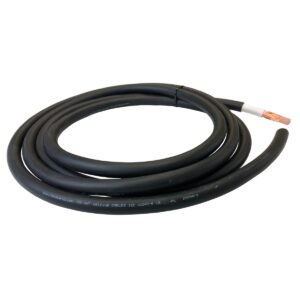What Is Welding Cable & How Is It Different From The Battery Cable?
Welding cables are designed to use electric arc-welding machines to power the electrode. This is designed by the metal rod, which conducts a charge. Here the charge is carried by the electrode needed to produce an electric arc. The welding cable is made extremely durable & flexible. Let’s take a look at how it differentiates from the battery cable.

What is welding cable?
Arc welding requires moving the electrode around the joints which are being welded. This is essential to have a flexible welding cable that allows for ease of movement. This is the high strand count & rubber insulation that helps enhance the cable’s flexibility. The durable cable is important in industrial environments where cuts, abrasions, and burns from the sparks & oil; water exposure can quickly wear out the weaker cable. Now let’s try to understand how it differs from the battery cable.
How is the battery cable different from the welding cable?
The welding & battery cables share multiple similarities. Compared to the other range of cables, these cables are flexible and contain a high-temperature rating of up to 105 degrees C. Apart from this, several significant differences are related to their application.
When we talk about the battery cable, these are relatively rigid along with the heavier gauge. The welding cable is extremely flexible with the highest number of fine standards made of copper wire. Battery cable is slightly difficult to bend, but it can retain its shape once it is formed. But the welding cable is slightly different than this. Now the question is can we use welding cable as the battery cable?
Yes, you can use the welding cable as the battery cable. Welding cable can create the ideal range of battery cables; when bending the cable, a lot is needed. You must support the cable completely because it can’t vibrate & touch the moving parts. It is also essential to use corrugated cable protectors to minimize the abrasion risk. No, the battery cables are unsuitable for welding because most welders have open circuit voltage exceeding 60 volts.
To choose the best welding cable, you can contact the Canaweld.



